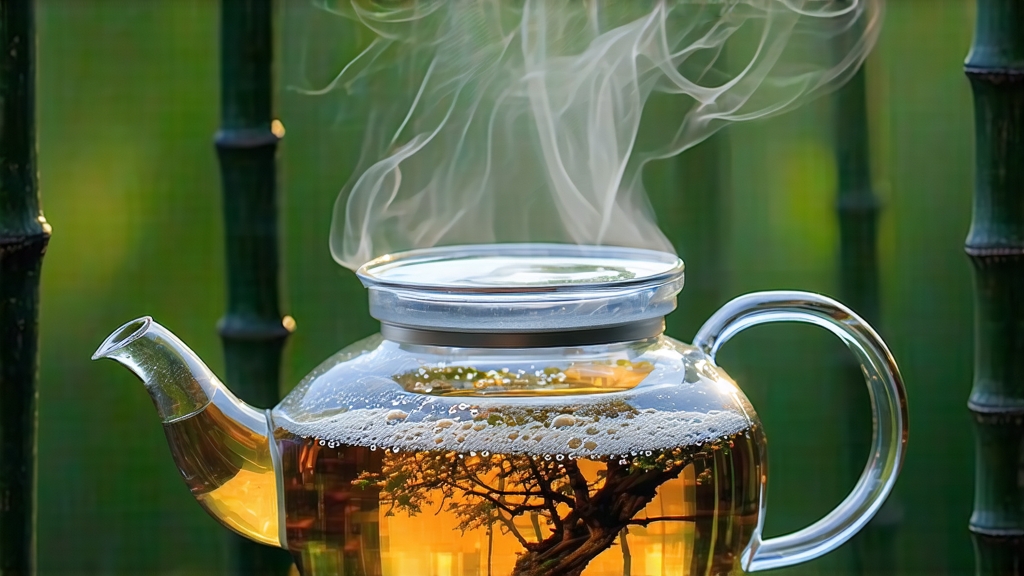
Among the pantheon of Chinese green teas, few names evoke as much visual poetry as Biluochun—literally “Green Snail Spring.” The curled, jade-colored spirals, dusted with silvery down, resemble tiny sea-snails harvested from the hills rather than the ocean. Yet the story of this tea begins not with mollusks but with a Daoist nun in the Dongting mountains of Jiangsu province during the late Tang dynasty. Legend claims she stumbled upon several wild tea trees whose fragrance rivaled that of the nearby fruit orchards. She transplanted them beside her cliff-side hut, and the resulting brew so delighted traveling scholars that word reached the Kangxi Emperor sixteen centuries later. On his 1699 southern inspection tour, the emperor found the tea’s original name “Xia Sha Ren Xiang” (“Scary-fragrant”) undignified; he rechristened it Biluochun after its shape and harvest season. Thus a rustic mountain herb entered the imperial canon and, eventually, the global imagination.
Geography is the first secret. The core production zone is a narrow crescent around Dongting Mountain on the banks of Lake Tai, China’s third-largest freshwater lake. The lake’s humid microclimate traps morning mist that diffuses sunlight into a soft, silver glow; chlorophyll develops slowly while amino acids accumulate, yielding the tea’s hallmark sweetness. Apricot, peach, loquat and plum trees are interplanted among the tea bushes. Their blossoms fall like snow in March, scenting the leaf long before it is plucked. When the dew evaporates but the mountain air is still cool, experienced pickers—almost always women whose fingers are said to be “spring scales”—break the apical bud together with the adjacent half-unfolded leaf, a standard known as “one bud, one leaf, 1.5 centimeters.” Fifty thousand such shoots are needed for a single liang (500 g) of finished tea, explaining why the finest grades once fetched twice their weight in gold on the Suzhou market.
The second secret is timing. The plucking window spans only fourteen days, from the Qingming festival (early April) to Grain Rain (late April). After that, lignin thickens overnight and the celebrated “fruit-spring” aroma fades. On the evening of harvest, the leaves are spread on bamboo trays in a drafty loft where mountain breeze lowers their temperature to 18 °C, locking in freshness. At dawn the next day the true craft begins: pan-firing and coiling, steps that must be finished within four hours lest enzymatic oxidation tips the tea toward oolong territory.
A cast-iron wok, polished by decades of straw scrubbing, is heated to 180 °C. The master—often a barefoot man in a cotton vest—swirls exactly 350 g of leaves across the scorching surface with bare hands. The motion looks casual, almost playful, yet every flick of the wrist is measured: pressure must bruise the cuticle enough to release fragrant aldehydes yet avoid rupturing cell walls that would darken the leaf. After three minutes the temperature is dropped to 120 °C; the leaves, now limp and jade-green, are rolled against the wok’s wall in a spiral motion that gives Biluochun its signature shape. This coiling phase lasts twenty minutes and is punctuated by three “cooling breaths,” during which the tea is briefly lifted into the air to re-absorb ambient moisture. Finally, the wok is cooled to 70 °C for a slow “drying kill-green” that reduces moisture to 6 %. When finished, a veteran can tell quality by sound: elite tea rings like jade beads when dropped onto a porcelain plate, whereas lesser grades thud dully.
Foreign drinkers often ask why Biluochun is never oven-baked or charcoal-roasted like many other greens. The answer lies in its intended flavor arc: the tea is designed to peak within six months, releasing a burst of spring orchard that fades gracefully into a honeyed quietness by autumn. Roasting would anchor the bouquet, but at the cost of that evanescent top-note—like pressing fresh jasmine into a book: the memory remains, yet the living scent is gone.
To brew Biluochun abroad, one must first forgive the fact that it left China in the first place. Vacuum-sealed foil bags and nitrogen flushing slow oxidation,